Keeping in touch with your colleagues around the world could soon be a lot easier thanks to a new update to Google Chat .
The online collaboration service is now allowing users to create group chats (known as Spaces) within Google Chat that you can then share with others in your organization.
Much like Slack , once a new custom Spaces group has been created, you'll be able to share it with whoever you choose, with participants able to join by clicking on a custom link.
Google Chat or Slack?
"With this launch, Spaces are no longer restricted to only people added to the conversation," Google said in a Workspace blog post announcing the news.
The company says the update will be particularly useful for creating and sharing "topic-based conversations" within your business, such as team discussions, how-to guides and mentoring opportunities.
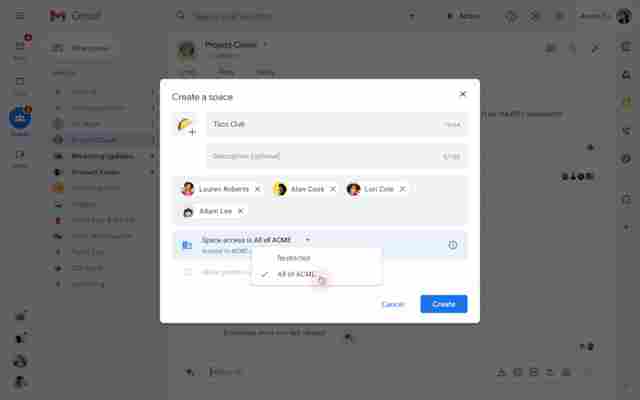
The change could also help leaders or admins share organizational and policy updates, or gather together a particularly interested or skilled group, such as when investigating an outage. Or, it could be great for just finding those with similar interests to yourself, allowing for custom groups to celebrate anything from sports to cooking.
Spaces will only be able to be shared with those inside your organization, and will have to be entirely new groups created from this date forward.
The feature is available and rolling out now to all Google Workspace customers, as well as legacy G Suite Basic and Business customers.
The news is the latest change to Google Chat to bring it more in line with some of its rivals, offering tools such as in-line replies and native content search , bringing Google Chat closer in line with services like Slack and Teams.
Google Chat officially replaced Google Hangouts earlier this year, with all enterprise and business users on "Classic Hangouts" having been upgraded to the new service by March 22, 2022.
The company says the move will ensure all Google Workspace customers are using the same platform, with anyone trying to access Hangouts being redirected across to Google Chat.
Could Google Wallet be set for a shock return?
Google could be reviving its old “Google Wallet” brand name as a new home for Android’s contactless payments.
According to a tweet by Mishaal Rahman, Senior Technical Editor at Esper , the new portal would provide users with access to “payment cards, loyalty cards, and more all in one place”, including the likes of passes across travel and entertainment.
Rahman said the user interface will sit within Google Play Services, and included several screengrabs showing how the new service would look, suggesting the new Google Wallet will be able to pull tickets and passes directly from a user’s Gmail account, much like Google Pay is able to.
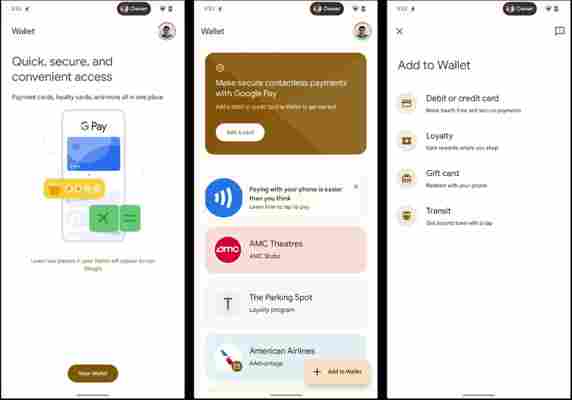
Back to its roots
Google’s payment offering currently consists of a standalone app “Google Pay” in most of the world, including the UK, and “GPay” in certain countries such as the US, Singapore, and India.
Google Wallet was initially launched in 2011 as a near-field communication (NFC) payment app, before being combined with Android Pay in 2018 to form Google Pay.
First spotted in early April 2022, the search giant’s new icon for the “Google Wallet” project makes use of its typical green, yellow, red and blue palette, just like the company's other mobile apps such as Gmail , Drive and , Meet . However, unlike GPay, the new logo looks like it omits the “G” next to the word “Pay”.
The news comes after Google parent company Alphabet appointed ex-PayPal executive Arnold Goldberg to the helm of its payments division, after the company axed its plans to offer consumers ‘Plex’ bank accounts in October 2021.
Bill Ready, Google’s president of commerce, told Bloomberg at the time that it sought to become the “connective tissue for the entire consumer finance industry, not just certain partners.”
Google’s annual developer Google I/O 2022 conference is coming up on May 11, 2022, so we may see and hear more about the new service then, along with a host of other new offerings.
Via 9to5Google
JBL Flip 6 vs JBL Flip 5: which portable speaker is right for you?
A portable speaker is a must-have device if you enjoy listening to music on the move, outside, or want a way to play your favorite tracks in your home without an expensive or complicated setup.
JBL has been one of our most-recommended Bluetooth speaker brands for years now. It makes some of the best Bluetooth speakers you can buy that are durable, portable and produce great sound – often without the higher price tag of some of its competitors.
The JBL Flip 5 was the brand’s flagship portable speaker of 2020. It’s a simple soul compared to many of its rivals, with no mic or voice assistant compatibility. However, it delivers enjoyable sound, it’s easy-to-use, has a minimal, rugged design, and has an IPX7 rating – that’s why it’s one of our best waterproof speakers .
In late 2021, the brand launched a newer version: the JBL Flip 6 . Like the Flip 5, this is a rugged, well-connected speaker with a simple setup. It can fill a room with your favorite music and provides a soundtrack for outdoor parties or poolside meet-ups. It has some upgrades on the Flip 5, including the most recent Bluetooth standard, dust proofing, and a step up in sound quality. But does that make the Flip 6 better than the Flip 5?
Whether you have a JBL Flip 5 and you’re not sure if you should upgrade it, or you’re in the market for a new portable speaker and want to weigh up different options from JBL, we’re here to help. The question is: which JBL Flip is the best for you?
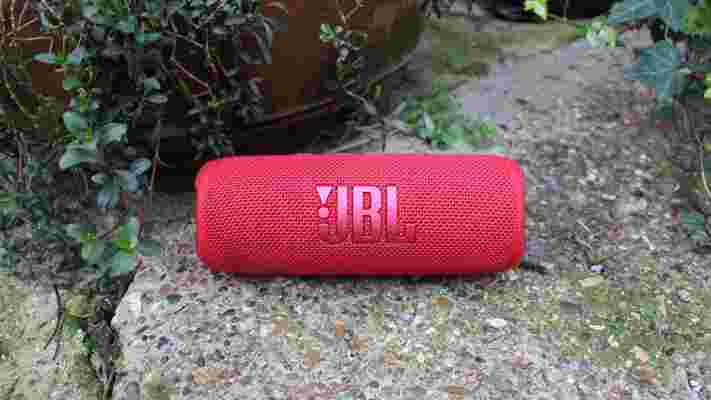
The JBL Flip 5 launched in August 2019 for $119.95 / £119.99 / AU$149.95. Fast-forward to 2022, and you’ll find it a little cheaper now as it’s an older model. For example, the JBL website currently has it discounted in US and UK regions for $109.95 / £109. It’s a similar price to some of its competitors from a year or two ago, like the UE Boom 2.
JBL released the Flip 6 in December 2021, and at $129.95 / £129.99 (which works out at around AU$175, though Australian pricing and availability are yet to be confirmed), it’s priced slightly higher than the Flip 5 was at launch. This is a reasonable price considering it has upgrades on the Flip 5.
What’s more, it’s cheaper than many of our other favorite Bluetooth speakers, such as the Sonos Roam at $179 / £179 / AU$299. Then again, the Flip 6 isn’t a direct competitor to the Roam, given it doesn’t have the same extra features, like Wi-Fi connectivity.
It’s probably more useful to compare the Flip 6 to the UE Boom 3 , available for the same price at $129.99 / £129.99 / AU$199.95, as well as the Anker Soundcore Flare 2 , which is much cheaper at $80 / £64.99 / AU$140).
The JBL Flip 5 is a minimal cylindrical speaker that weighs in at 540g and is around the size of a small thermal flask. You can easily carry it in your hand, slip it in a bag, and, thanks to a strap, hang it on a door handle or tree in a park.
It comes in a range of colors, including white, dark blue, grey, green, camo and more. It has an IPX7 waterproof rating, which means it can be immersed in water up to a metre deep for 30 minutes.
The JBL Flip 6 looks very similar to the Flip 5. It has the same build, wraparound grille and bass radiators on each side. The logo on the front is different. Rather than JBL’s white on red, it matches the speaker’s colour and takes up more room on the side.
It weighs 550g, so it’s a little heavier than Flip 5, but that makes sense given the improvements. It’s still portable and has a strap, so you can listen on the move, hang it somewhere or wear it around your wrist.
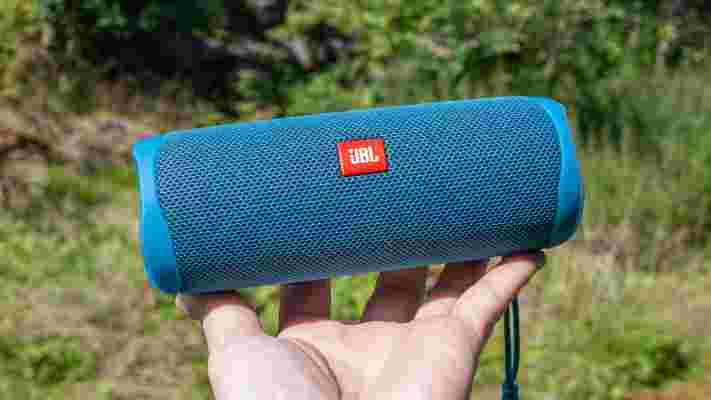
The Flip 6 comes in fewer shades than the 5, including red, black, blue and grey, but JBL might introduce more options further down the line.
Like all of the products in JBL’s line-up, both are well-built, have an excellent finish and a simple layout. They’re also both straightforward to use.
The main difference in design is that the Flip 6 has introduced dust resistance alongside water resistance, giving it an improved IP67 rating. This means that the speaker has been tested in a lab setting where dust has been sprayed at it. Getting the ‘6’ of the IP67 rating means no dust got inside the device or messed with the controls because of its dust-tight construction. This rating applies to fine particles, including sand, so you can happily take the Flip 6 to the beach.
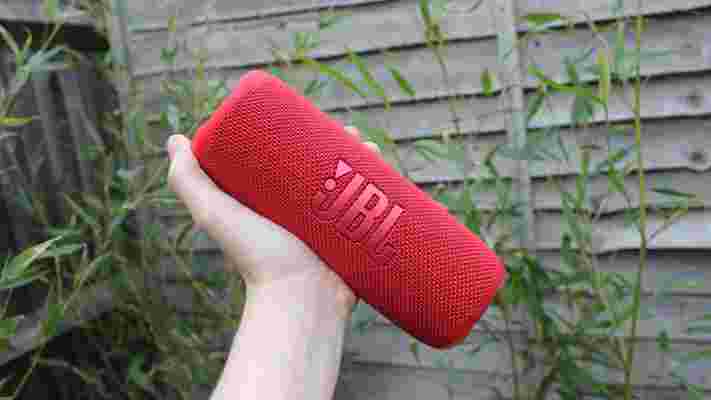
The JBL Flip 5 is a great-sounding speaker. During our review, we found whether we play Mac Miller's languid-yet-sharp rapping or Explosions in the Sky's post-rock instrumentalism, it delivers audio playback with stark clarity, vast amounts of detail and more than a hint of dynamism.
Anyone not already acquainted with JBL's quality audio would be shocked at how clear and musical this speaker sounds. Turning up the volume didn't lead to distortion, so you can crank it up and keep listening several metres away.
Even though the JBL Flip 5 is a solid speaker with a very pleasing sound, the Flip 6 has a new audio configuration that makes it even better.
We listened to Little Simz' Woman during our testing, and the radiators pulsed pleasingly as the vampy bass lines bounced around the mix. Simz' relaxed rap delivery sounded clear amid the jazzy piano chords, while Cleo Soul's lacelike vocal boasted a rich, lush quality as it floated above the rest of the instrumentation.
We followed up with Yeah Yeah Yeahs' Soft Shock, and the driving rhythm section with trebly drums, pulsating synths, and hammering basslines sounded tight and accurate, while Karen O's floaty voice had a convincingly natural presence.
When we bumped up this track to the highest volume, we did get some harsh treble sounds, but on the whole, the JBL Flip 6 can reach loud volumes without much distortion. Generally, the audio performance is warm and well-balanced, with an excellent sense of clarity.
If you want a significant enhancement in sound, both the Flip 5 and the Flip 6 have a PartyBoost feature. This allows you to pair any two compatible JBL speakers in stereo or up to 100 in mono for a wall of sound. Annoyingly, though, you can only pair the Flip 6 in stereo with another Flip 6, but that's only a minor drawback.
Feature-wise, there's not much else to say here, and that's the point. These are both minimal speakers. They don't have an AUX socket for hardwiring a smartphone, and there's no built-in microphone to make hands-free calls or activate Siri and Google Assistant. They're both an excellent choice for those who want great music and nothing else – or those who don't like the idea of a smart assistant, or anyone else, listening in.
The Flip 5 and Flip 6 have 12 hours of battery, which we found accurate during testing. There’s also USB-C fast charging here, so they’ll juice up in around two-and-a-half hours.
The JBL Flip 6 has had a Bluetooth upgrade to 5.1 compared to the 4.2 found in the Flip 5. Pairing the speaker with our iPhone 13 Mini was quick and straightforward. There were no connectivity lags or dropouts, and you can pair it with two devices at once if you want to take turns DJing with friends.
The JBL Portable app supports both speakers. This allows you to update the software, turn the feedback tone on and off, make adjustments to equalizer settings – there are sliders for bass, mid and treble frequencies – and read the user guide. This is also where you can enable the PartyBoost feature.
Although both speakers are similar, if you’re trying to choose between the two and money isn’t an issue, spend the extra $20 / £20 for the upgraded Flip 6. Thanks to its improved performance and added dust protection, it sounds great and will fare better on the beach and outdoors.
Then again, now the Flip 5 is a few years old, you’ll likely find some great deals. So if you want a solid speaker for the best price, the Flip 5 might make the most sense. If you’re considering upgrading from the JBL Flip 5, be warned that the differences here are subtle. Upgrade if you’re taking your Bluetooth speaker on vacation and to the beach. Otherwise, save your money.
If you’re looking for additional features, like Wi-Fi connectivity, a mic, AUX-in for wired listening, charging port for your phone or a smart assistant built-in, then look elsewhere. You won’t find those from JBL’s Flip range, and you might be better suited with a more high-end option, like the Sonos One or Sonos Move .
If you’re looking for a no-frills outdoor speaker at an even lower price, there are some budget options out there, like the Anker Soundcore Flare 2 and 1MORE Portable BT Speaker .
Otherwise, you can’t go wrong with the JBL Flip 5 or the JBL Flip 6. They are both excellent outdoor, portable speakers. They have a rugged and minimal design, they’re easy-to-use and offer incredible sound without a ton of extra features to navigate. They simply play music and play it well.